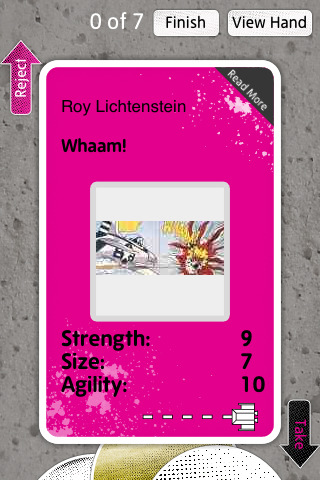While technology and art combine frequently to facilitate the practices of arts managers, they are simultaneously blending to create a whole new artform--new media art. All bets are off with this medium, as an array of tools, approaches and capabilities make it impossible to label as either visual or performance; in many cases, the art goes even farther and provides a social benefit to those who experience it. This week’s TBT provides managers with a roundup of the research we’ve done so far to start piecing together a picture of what new media art means for the future of management in all types of arts venues and forums.
Research Update #3: Best Practices of Twitter
According to statistics from Digitalbuzz, there are over 288 million monthly active users on Twitter, 60% of which access the social network from mobile.
Contributor Aoni Wang investigates some best practices for this growing platform by continuing her examination of the Met, Warhol, and Tate's social media strategies. Click here to read the full article.
Playing with Art: Tate Trumps iPhone App
 It’s no secret that there are apps for everything and art museums are no exception. The Mattress Factory lets you ask is this art and subsequently allows you to answer that question. The Andy Warhol Museum lets you put yourself into a painting with their D.I.Y. POP app. The Tate Modern has Tate Trumps to let you battle your friends with works of art.
Yes, that’s right. Released in June of 2010, Tate Trumps is an application designed to increase viewer interaction with the works within the Tate Modern with a “bloody fight to the death”. Unlike the aforementioned apps, which allow users to interact with art anywhere, Tate Trumps only works within the confines of the Tate Modern.
It’s no secret that there are apps for everything and art museums are no exception. The Mattress Factory lets you ask is this art and subsequently allows you to answer that question. The Andy Warhol Museum lets you put yourself into a painting with their D.I.Y. POP app. The Tate Modern has Tate Trumps to let you battle your friends with works of art.
Yes, that’s right. Released in June of 2010, Tate Trumps is an application designed to increase viewer interaction with the works within the Tate Modern with a “bloody fight to the death”. Unlike the aforementioned apps, which allow users to interact with art anywhere, Tate Trumps only works within the confines of the Tate Modern.
Described as a “digital card game”, Tate Trumps is a free iPhone app for up to three players, which encourages users to travel the museum and collect points by looking at works of art. Players collect seven works of art and no work of art can be collected twice. A game of Tate Trumps has a minimum time requirement of a half hour, though there is no maximum time limit. Users meet up at the end of their adventure and play a game of trumps against each other, using the works of art they’ve accumulated.
Tate Trumps includes three modes. Battle Mode has users judge how useful a work of art would be in a fight, if it were to come to life. Players search for works of art that are exhilarating, menacing, or absurd in Mood Mode. The final mode, Collector, is for players that “wish they had a gallery of their own”, as they search for pieces that are famous, recently produced, or practical to house.
The viral video for Tate Trumps promises that “galleries will never be the same again”, which incites the question, do galleries need to change? Tate Trumps is a fun, light-hearted way to look at art with the intention of increasing viewer interactivity with the pieces. Does it accomplish this, or is this application trivializing the experience of the museum?
There aren’t any easy answers, and there may not be a right answer. I feel that Tate Trumps has strong potential to accomplish its goal of connecting the viewer with the works. The time limit and inability to repeat pieces in a game means that in a full game, players will spend at least a half hour looking at a minimum of twenty-one works of art. The different modes force the player into critically analyzing the works of art, on multiple levels. The idea of this application may not be appropriate for every museum setting, but could it work for you? Would you play an app game in an art museum?







